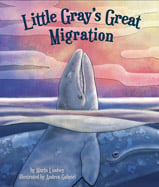Alignment to Standards for UT

| Grade | Number | Standard |
|---|---|---|
| 2 | CC-2.III.1a. | Observe and describe relationships between plants and animals. |
| 2 | CC-2.III.1c. | Create pictures and stories about real animals and compare them to make-believe stories about animals. |
| 2 | CC-2.III.2c. | Describe how weather affects people and animals. |
| 3 | SC-3.II | organisms depend on living and nonliving things within their environment. |
| 3 | SS-3.I.2a. | the major world ecosystems: desert, plain, tropic, tundra, grassland, mountain, forest, wetland |
| 4 | SC-4.V.2b. | Cite examples of physical features that allow particular plants and animals to live in specific environments (e.g., duck has webbed feet, cactus has waxy coating). |
| 5 | SC-5.V.1d. | Contrast inherited traits with traits and behaviors that are not inherited but may be learned or induced by environmental factors (e.g., cat purring to cat meowing to be let out of the house; the round shape of a willow is inherited, while leaning away fr |
| 5 | SC-5.V.2b. | some environments give one species a survival advantage over another (e.g., warm water favors fish such as carp, cold water favors fish such as trout, environments that burn regularly favor grasses, environments that do not often burn favor |
| K | CC-K.III.1d. | Observe and describe changes in behavior of animals as the seasons change. |
| K | CC-K.III.2e. | Distinguish between real and make-believe animal behaviors. |